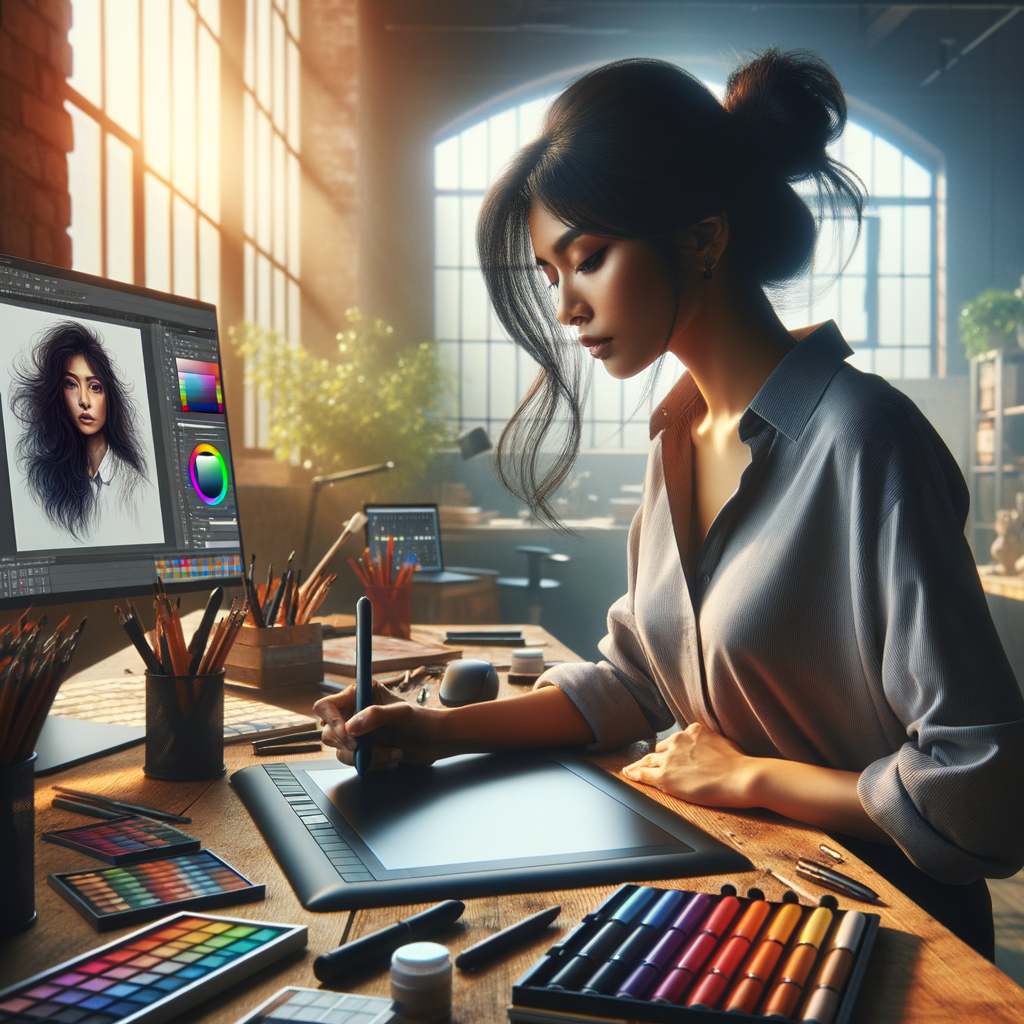
Achieving realism in digital art can be one of the most rewarding yet challenging aspects of creating artwork. Whether you're a beginner looking to enhance your skills or a seasoned artist aiming to refine your techniques, understanding the fundamental principles behind realistic rendering is crucial. This article delves deep into various strategies, tools, and tips to help you create stunning, lifelike digital art. From mastering the use of light and shadow to choosing the right colors, we will cover all the essential aspects of realistic digital painting. Let's embark on this journey to unlock the secrets of realism in digital art together!
In the world of digital art, realism is often the ultimate goal for many artists. This ambition can stem from a desire to create artworks that resonate deeply with viewers, evoke emotions, or capture the intricacies of life as it is. In this comprehensive guide, we will explore a range of techniques that can help you bring a remarkable degree of realism to your digital creations.
Understanding the Basics of Realism
Realism in art refers to the accurate, detailed representation of visual subjects. It is essential to understand that realism is not just about replicating reality, but also about capturing the essence of the subject through meticulous observation, attention to detail, and the effective use of various artistic techniques.
Before diving into the techniques, let’s cover some foundational concepts that underpin realistic digital painting:
- Observation: The first step in achieving realism is keen observation. Spend time studying the objects, scenes, and figures that inspire you. Take note of how light interacts with surfaces, the subtle colors present in shadows, and the intricate details of textures.
- Values and Contrast: Pay attention to the values in your artwork. Values are the lightness or darkness of a color and play a crucial role in creating depth and dimension. Using a broad range of values can enhance the three-dimensional quality of your work.
- Color Theory: Understanding color theory is vital for selecting the right colors that convey the mood and realism in your art. Familiarize yourself with concepts such as complementary colors, color harmonies, and color temperature.
Techniques to Achieve Realism
Now that we’ve laid the groundwork, let’s explore specific techniques that will elevate your digital artwork to a new level of realism.
1. Mastering Lighting
Lighting is one of the most essential elements in creating realistic art. It defines how we perceive objects, creating highlights, shadows, and mid-tones that provide form and structure. Here are some tips to effectively use lighting in your artwork:
- Identify Light Source: Always determine the light source in your composition. Whether it’s natural (like sunlight) or artificial (like lamps), knowing where the light is coming from will guide your shading and coloring decisions.
- Highlight and Shadow: Use highlights to draw attention to the focal points of your artwork. Conversely, shadows can provide depth and help define shapes. Experiment with different brush settings to achieve various levels of opacity and hardness for accurate highlights and shadows.
2. Texture Techniques
Textures add realism to digital paintings by mimicking the surfaces of objects. Various methods can be used to create realistic textures:
- Brush Selection: Many digital painting programs come with a variety of brushes that simulate different textures. Don’t be afraid to explore and even create custom brushes that suit your artistic needs.
- Layering: Use multiple layers to build up textures gradually. Start with a base texture layer and then overlay additional layers of detail and effects to create a rich, complex texture.
3. Detail Work
Adding fine details can significantly enhance the realism of your artwork.
- Patience is Key: Take your time with detail work. It might be tempting to rush through, but meticulous attention to tiny aspects like reflections, facial features, or fabric folds contributes to the overall realism.
- Zoom In: Don’t hesitate to zoom in on your artwork to add intricate details without losing precision. This can help you focus on areas that need more work.
4. Color Mixing and Harmony
Choosing the right colors and ensuring they work harmoniously together is paramount in achieving realism.
- Digital Color Mixing: Many programs offer various blending modes that can help you mix colors naturally. Remember to experiment with how colors blend through layering and opacity.
- Utilize Color Palettes: Create or find color palettes that resonate with the mood of your artwork. Holding a color palette while painting can assist in maintaining consistency throughout your piece.
5. Practice and Experimentation
Lastly, practice is essential for mastering these techniques. Don’t be afraid to experiment, as this will lead to growth and discovery in your artistic journey.
Try recreating realistic images to understand the processes involved better. Over time, you will develop your own style of realism that resonates with your artistic voice.
Conclusion
Achieving realism in your digital artwork is a rewarding challenge that can significantly enhance your skills as an artist. By following the techniques outlined in this guide, you will be well on your way to creating stunning artworks that capture the intricacies of life and evoke emotions in your viewers. Remember that every artist has unique methods, so embrace your journey, keep experimenting, and most importantly, enjoy the process of creating art!

